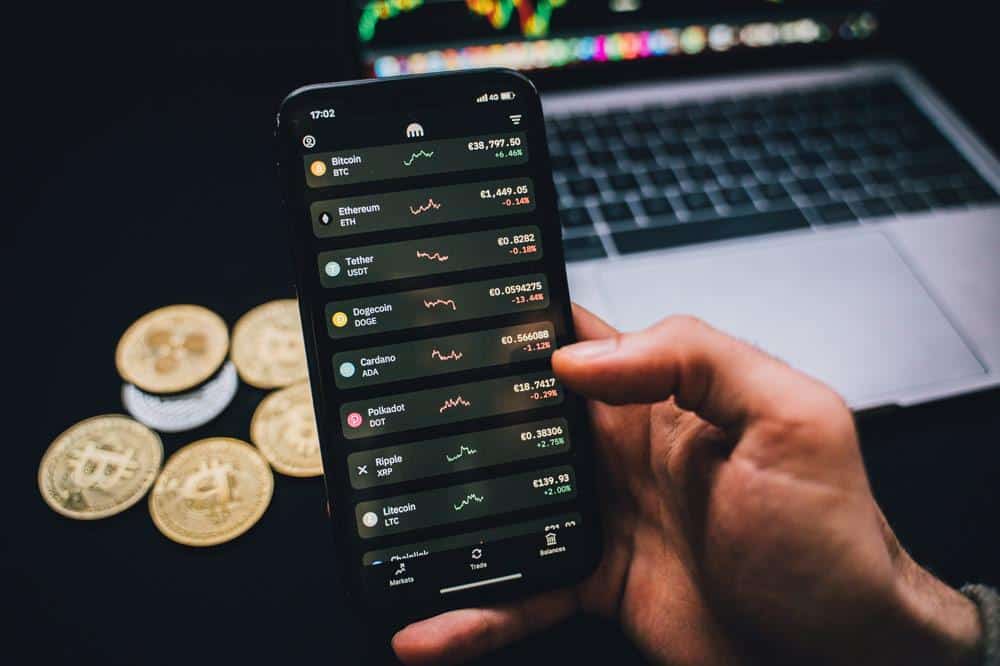Blockchain technology prides itself on decentralisation. No central entity controls transaction verification or sets coin prices. So, it is natural that developers want to decentralise crypto exchanges. This will give users better control of their crypto assets to move around as they see fit, for example, to a wallet when they want to gamble at the best crypto casino.
Uniswap is one team’s attempt at decentralising a crypto exchange. This guide will expand on what the platform does and how it differs from centralised exchanges.
What Is Uniswap?
Hayden Adams created the platform for crypto enthusiasts to swap ERC-20 tokens. It does not rely on a central authority to maintain the platform. Instead, it depends on the community to trade tokens with each other.
Accordingly, platform users do not need to pay platform fees without a central authority. More importantly, they do not need to store their crypto in exchange for swapping tokens.
The platform is built on Ethereum and uses various smart contracts to initiate swaps. The platform is also compatible with all ERC-20 tokens and wallets.
Furthermore, it allows users to list any compatible ERC-20 token. They only need to create a smart contract and a liquidity pool for an unlisted token.
The platform’s code is open source. This means that other developers can copy its code and create their exchange projects.
Finally, it does not rely on matching buyers and sellers to calculate token prices and complete trades. Instead, it uses liquidity pools and a simple math equation.
Centralised Exchanges vs Decentralised Exchanges
To better understand this platform’s significance in the crypto market, we must delve into the major differences between a centralised and decentralised exchange (DEx).
Centralised Exchange
Centralised exchanges are platforms where users can trade, buy, or sell their crypto assets. Users must provide the platform with personal information like their government-issued ID and proof of address.
After verification, they must deposit crypto in the exchange and create a sell or buy order. The order book is an off-chain database that helps determine coin prices using trading volume and supply and demand metrics.

These types of exchanges are the most popular among traders. This is because these exchanges provide traders with stable fiat trading pairs pricing. And the largest centralised exchanges have high liquidity, like Coinbase and Binance.
Decentralised Exchange
DEXs, on the other hand, do not rely on order books to determine coin prices. Additionally, they function as peer-to-peer networks. This means there are no middlemen, and users must store their crypto in a wallet.
DExs have much more robust security because these platforms do not store users’ private keys in the exchange. So even if a hacker attacked the exchange, they would only obtain information about the platform, not the users.
Centralised exchanges store these keys in the exchange, meaning a user might lose all their holdings on that platform.
Centralised exchanges also charge their users a variety of fees. These include fiat to crypto exchange, administration, and trading fees. DExs do not charge fees but could require a small transaction fee depending on which DEx a user chooses.
DExs are not highly regulated because the platforms do not compel their users to provide personal information. This means there are no guarantees that a DEx would follow laws concerning cryptocurrencies. It also means that these exchanges do not have trusted insurance providers.
Finally, centralised exchanges execute orders within milliseconds because of their high liquidity. On the other hand, it might take up to a minute to execute orders on a DEx.
The Problem With Decentralized Exchanges
Developers discovered that centralised exchanges gained high liquidity at the expense of decentralisation. Users have to rely on these exchanges to store and manage their assets. Users do not have complete control of their holdings, and most centralised exchanges require them to deposit a minimum amount of crypto to use the platform’s features.
Developers wanted to create a truly decentralised exchange but faced major problems.
Because users do not need to deposit crypto in the exchange to begin trading, decentralised exchanges have low liquidity. This means there are not enough traders to create even spreads in the exchange, resulting in a platform that has undervalued or overvalued cryptocurrencies. This would have no benefit for a trader. Hence, decentralised exchanges have low liquidity.

Developers attempted to fix the issue by employing market makers. They create both buy and sell orders, thus reducing the spreads. These market makers would gain returns on the difference between the two.
This did not work because blockchain finality was too slow, so the market makers lost more from making the orders than they could profit from.
How Does Uniswap Work?
The platform runs two smart contracts on the Ethereum blockchain.
First is an Exchange contract, which manages all token swaps on the platform.
The second is a Factory contract, which adds new tokens to the platform.
It attempts to solve the liquidity problem using an automated liquidity protocol. The platform incentivises people to add tokens and become liquidity providers (LPs).
The platform adds these tokens to a pool which makes up a fund. Users use this fund to execute all trades on the platform. Moreover, each new token receives its pool. Users need to add tokens to a specific pool.
Liquidity providers receive a token for the value of their stake and the total value of the pool. For example, if a user staked $4,000 and the pool is worth $200,000, they would receive a token worth 2% of the total pool. They then cash in this token to receive rewards from trading fees in that pool.
Uniswap uses a math equation to calculate token prices in each pool. And because users stake tokens in pools, they do not have to wait for a seller or a buyer to trade tokens. They can make any trade if a pool has enough liquidity.
When an LP wants to exit the platform and redeem its token contributions, the platform destroys the record of the reward owed to the LP. Currently, the platform charges 0.30% trading fees. The platform stores the proceeds in a liquidity reserve.
Automated Market Maker
It uses an automated market maker to determine coin prices. It adjusts the price of an asset according to its supply and demand and a math equation. The market maker increases or decreases coin prices by looking at the ratio of how many coins are in a pool.

A user needs to add an ERC-20 of their choosing and another ERC-20 token of equal value to start a liquidity pool. The market maker then uses the equation x*y=k to determine the token price.
For instance, If ETH is x and BTC is y, K is a constant value. So, if a user adds ETH to the ETH/BTC pool, the value of ETH decreases because the user adds more of that particular token. Seeing that K needs to be a constant value, the price of BTC needs to increase to maintain the K value.
Accordingly, this means that if a pool has high liquidity, the price changes will not impact users too much.
Arbitrage Traders
The platform relies on arbitrage traders to balance significant price discrepancies across the different liquidity pools. These traders traditionally comb various crypto exchanges to find price differences. They do this to gain a profit from underperforming or overperforming coins.
For example, if ETH is $300 on Binance and $400 on Coinbase, an arbitrage trader would buy ETH on Binance, sell it on Coinbase and earn a $100 profit.
Now, arbitrage traders on the Uniswap platform look for under or overperforming coins across different pools and attempt to execute trades until price discrepancies disappear. They do this to bring the coins in line with market prices.
Smart Contracts
As we previously mentioned, the platform runs on smart contracts. Factory and exchange are the two core contracts. These core contracts are simple because smart contracts without much code are less prone to errors and run more efficiently.
The developers recommend periphery contracts to add to the platform. These contracts interact with core contracts but do not form part of it.
These periphery contracts include the Library smart contract and Router smart contract. The first allows for convenient data and price fetching. The second has all the front-end functions, like multi-trade pairs and meta transactions, to minimise liquidity and prioritise ETH. The Router contract relies on the Library for information.
UNI Tokens

The platform’s native token, UNI, is a governance token. Holders of the UNI token can vote on changes to the platform, new developments, and how tokens get distributed across the community.
The platform developers created the UNI token to prevent users from moving to a fork named Sushiswap. This fork offered users SUSHI tokens to move their funds from Uniswap. The token gave users governance rights and a reward for all the transaction fees on the new platform.
Uniswap created 1 billion UNI tokens and distributed them to existing users on the platform. Each user received 400 UNI tokens.
Wallets
To trade on the platform, users need an ERC-20 compatible wallet. They need an ETH balance in the wallet because any actions on the Ethereum blockchain require users to pay gas fees with ETH.
Many wallets are available for users, but the wallet needs to be non-custodial and provide cold storage. These features enhance security and mitigate the risks involved with cryptocurrency hacking.
The Ledger Nano series of hardware wallets provide users with the most secure method to store their crypto. It is a physical device that stores a user’s private keys. Users can connect it to other devices using a cable or Bluetooth. It also supports over 1,250 coins.
The Coinbase wallet is another option for users. Users can access it from the web or an app. It provides users with security and convenience, but they must sign up with an email address.
Those new to crypto can use the Fortmatic wallet. It has a straightforward user interface, and users do not need to tweak any settings in the wallet.
How To Trade On Uniswap
Users need an ERC-20 compatible wallet and an ETH balance for gas fees. They can choose between slow, medium, or fast payments with their wallet service.
Next, users must navigate uniswap.org and click “Use Uniswap” on the page. Next, they need to connect their chosen wallet to the platform. They need to give permission from their wallet and allow Uniswap.5.

After that, the platform will allow the person to swap tokens. They can select which tokens to swap. Then users need to confirm the transaction from their ERC-20 wallet.
Finally, users must wait for the transaction to appear on the Ethereum blockchain. They then receive the crypto they swapped for.
Competitors
There are other decentralised exchanges on the market that perform similarly to Uniswap. Sushiswap is the first obvious competitor.
This DEx runs liquidity pools and relies on the community to vote on changes to the platform. SUSHI token holders also receive a reward for transaction fees.
Another upcoming DEx competitor is Kadenaswap. Stuart Popejoy developed Kadena, a hybrid blockchain that can communicate across different networks. He states that Kadena’s bridge infrastructure, which allows cross-chain token transfers, can handle the increasing gas fees on Ethereum.
In essence, Kadenaswap attempts to solve the issue of high gas fees by dividing liquidity pools and transactions across multiple chains.
Conclusion
Uniswap is a decentralised exchange, using liquidity pools and an automated market maker system to gain high liquidity and calculate coin prices.
Users require an ERC-20 wallet to use the platform. They can become liquidity providers if they stake a token in a liquidity pool. They will receive a reward from transactions in that pool.
Finally, the platform solves many issues concerning decentralised crypto exchanges. But the problem of high gas fees on Ethereum still exists.

















